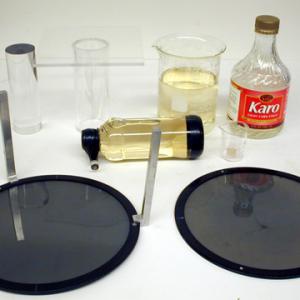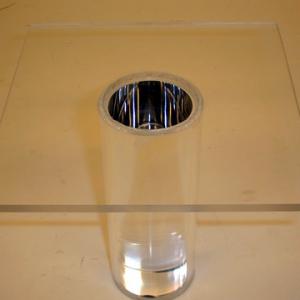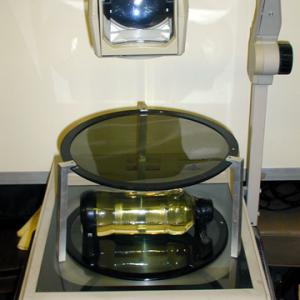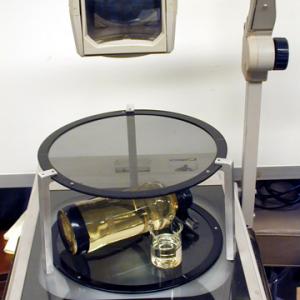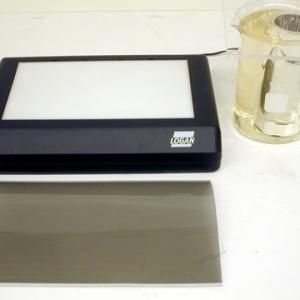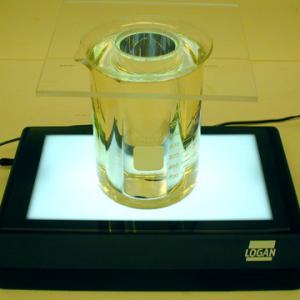College of Liberal Arts & Sciences
6H30.40 - Polarization - Karo Syrup, Depths of Karo
Karo Syrup will show different colors depending on depth when between crosses Polarizers. This can be done two ways. Pour Karo into a tall container and watch the change or put the large Plexiglas rod into the a container that already contains Karo and watch the colors change as you push the rod into the syrup.
NOTE: Only secondary colors are seen here.
This can be done on the overhead for most cases but for a portable unit you can do this with the slide viewer and some Polaroids.
A cool variation is to place the spoked polarizer plate under the beaker, add some Karo syrup, and then rotate the other polarizer over the beaker.
- Paul Changnon, "Animated Displays IV: Linear Polarization", TPT, Vol. 31, # 8, Nov. 1993, p. 489 and referenced in Resource Letter TLC-1 Teaching Light and Color, Demonstration Experiments Resource Articles.
- Roland A. Hultsch, "A Demonstration of Optical Activity", TPT, Vol. 20, # 7, Oct. 1982, p. 476.
- George Freier, B. G. Eaton, "Optical Activity Demonstration", AJP, Vol. 43, #8, Aug. 1975, p. 939.
- Wallace A. Hilton, "P-6", Experiments in Optical Physics, p. 77.
- Bill Franklin, "Optically Active Materials", Teaching about Color & Color Vision, 1996, p. 9D-1.
- The Exploratorium, "Rotating Light: Polarized Light Passing Through Sugar Water "Rotates" to Reveal Beautiful Colors", The Magic Wand & Other Exp. in Light & Color, p. 94 - 99.
- W. Bolton, "Optical Rotation", Book 2 - Waves and Particles, Physics Experiments and Projects, 1968, p. 26-27.
- Optical Rotation, Wikipedia, https://en.wikipedia.org/wiki/Optical_rotation.
Disclaimer: These demonstrations are provided only for illustrative use by persons affiliated with The University of Iowa and only under the direction of a trained instructor or physicist. The University of Iowa is not responsible for demonstrations performed by those using their own equipment or who choose to use this reference material for their own purpose. The demonstrations included here are within the public domain and can be found in materials contained in libraries, bookstores, and through electronic sources. Performing all or any portion of any of these demonstrations, with or without revisions not depicted here entails inherent risks. These risks include, without limitation, bodily injury (and possibly death), including risks to health that may be temporary or permanent and that may exacerbate a pre-existing medical condition; and property loss or damage. Anyone performing any part of these demonstrations, even with revisions, knowingly and voluntarily assumes all risks associated with them.
